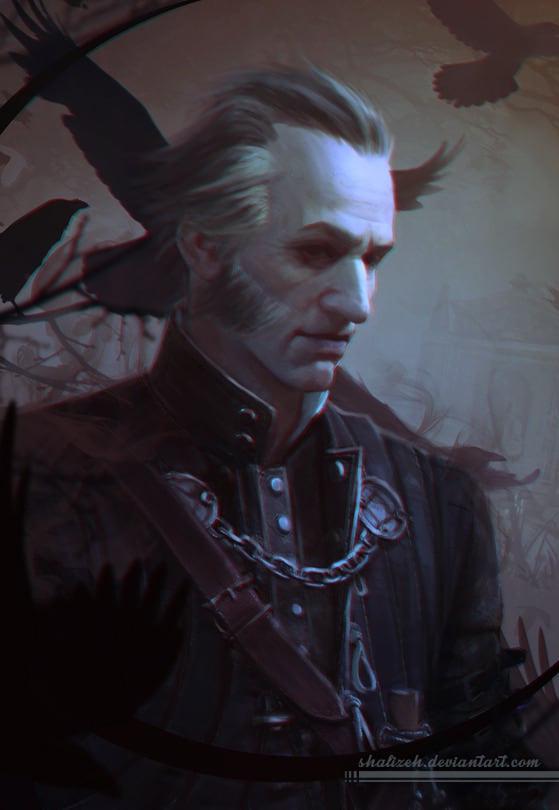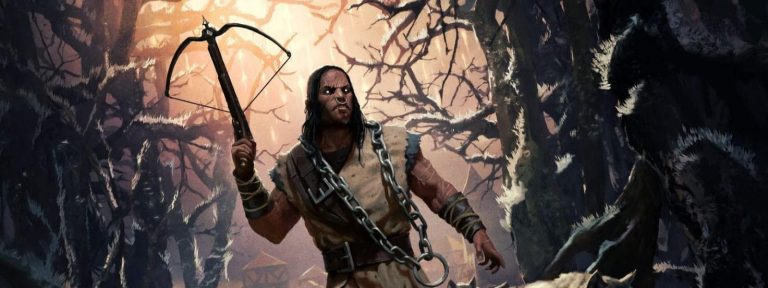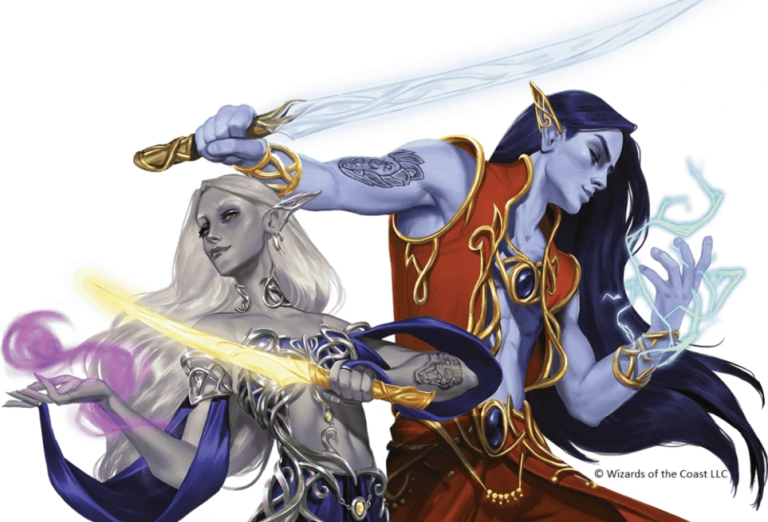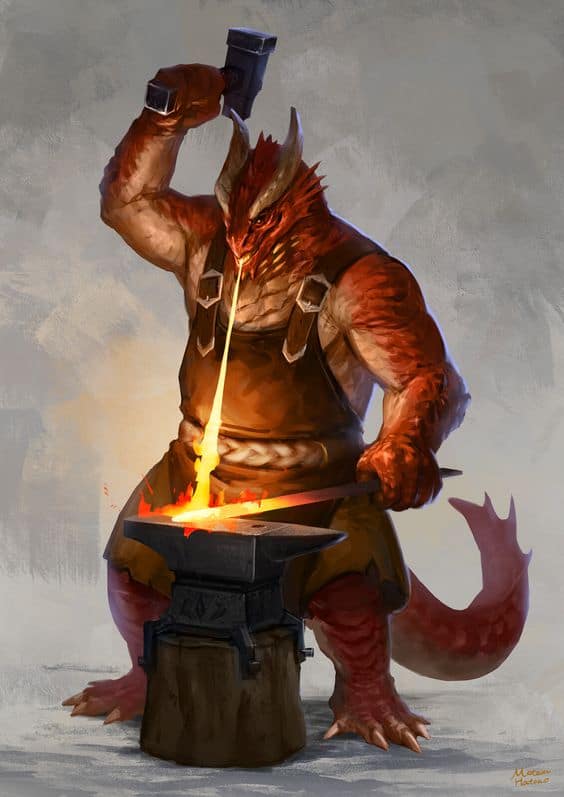D&D 5e: Undying Warlock Guide

D&D 5e: Undying Warlock Guide
Role in the Party
The Undead Warlock is one of the strongest warlock subclasses out there. It also has a similarly named and much lamer cousin known as the Undying Warlock. Do not confuse these two subclasses for each other, because the Undying Warlock is a terrible subclass.
Undying Warlocks make pacts with powerful undead and undead-adjacent entities, from powerful liches to the almighty Vecna.
The features of the Undying Warlock are weak and insubstantial, but you can make a decent character with it, possibly by exploiting a few spells in the expanded spell list to buff yourself and your allies. You will be a normal warlock, but slightly more durable.
Epic
Good
Meh
Bad
The Undying Warlock subclass is found in the Sword Coast Adventurer’s Guide. Click here to pick up your own copy of the Sword Coast Adventurer’s Guide!
Undying Warlock Features
Expanded Spell List:
1st: False Life is almost identical to Armor of Agathys, but it doesn’t deal cold damage to people who hit you in melee and has the same one hour duration. Bleh. You get 1.5 temporary hit points on average, but that’s not worth it. Ray of Sickness is a mediocre spell and not worth using your precious few spell slots. It’s less terrible on a Wizard since they can cast a concentration spell and then Ray of Sickness, but you have Eldritch Blast already, and casting a concentration spell and ray of sickness will cost most warlocks all of their spell slots.
2nd: Blindness/Deafness is a decent concentration-free debuff but isn’t any better than your usual 2nd level picks. Silence is a decent spell, but only if your allies can somehow keep enemies in the area, and only if those enemies are things like spellcasters who can no longer use verbal components. Expect it to do nothing if you don’t prepare or use it strategically.
3rd: I doubt anyone has ever cast Feign Death. At least Speak With Dead is pretty good.
4th: Aura of Life is a fine spell that can give your whole party resistance to necrotic damage or heal them, and Death Ward would be pretty good if you had more slots. However, unlike Armor of Agathys and other spells, it has an eight hour duration. A short rest is one hour. The cheese is pretty obvious: take a few short rests in a row and cast it on your whole party. I have big problems with recommending this combo since this is a cheesy playstyle that very few tables are willing to accommodate, but it’s not inherently broken to use it for this purpose.
5th: Contagion and Legend Lore both suck.
Among the Dead
Starting at 1st level, you learn the Spare the Dying cantrip, which counts as a warlock cantrip for you. You also have advantage on saving throws against any disease.
Additionally, undead have difficulty harming you. If an undead targets you directly with an attack or a harmful spell, that creature must make a Wisdom saving throw against your spell save DC (an undead needn’t make the save when it includes you in an area effect, such as the explosion of Fireball). On a failed save, the creature must choose a new target or forfeit targeting someone instead of you, potentially wasting the attack or spell. On a successful save, the creature is immune to this effect for 24 hours. An undead is also immune to this effect for 24 hours if you target it with an attack or a harmful spell.
The Spare the Dying cantrip doesn’t say it doesn’t count against your total warlock cantrips known: I think the intent is that it’s supposed to not count against your total cantrips known, but talk to your DM. Advantage against disease is bleh. An always-active Sanctuary that only works on undead is kind of terrible; the undead can just hurt your allies instead. This isn’t good at all.
Defy Death
Starting at 6th level, you can give yourself vitality when you cheat death or when you help someone else cheat it. You can regain hit points equal to 1d8 + your Constitution modifier (minimum of 1 hit point) when you succeed on a death saving throw or when you stabilize a creature with Spare the Dying.
Once you use this feature, you can’t use it again until you finish a long rest.
Once per day, when you would succeed on a death save, you get what’s basically a Cure Wounds on you. In theory, this might be a decent way to unburden your allies from having to heal you, but they might want to heal you anyway because Defy Death only works if you succeed on a saving throw, so you could roll a 6 and then a 1 and die. Alternatively, you get a Cure Wounds on yourself when you stabilize an ally, which is pretty low healing for this level. Yet again, this is just a bad feature.
I’m narrowly ranking this Meh since it might, might save your life, but I wouldn’t count on it.
Undying Nature
Beginning at 10th level, you can hold your breath indefinitely, and you don’t require food, water, or sleep, although you still require rest to reduce exhaustion and still benefit from finishing short and long rests.
In addition, you age at a slower rate. For every 10 years that pass, your body ages only 1 year, and you are immune to being magically aged.
Everything here is just a ribbon feature. There’s nothing here of actual substance. I guess slow aging is cool and thematic, but that’s it.
Indestructible Life
When you reach 14th level, you partake of some of the true secrets of the Undying. On your turn, you can use a bonus action to regain hit points equal to 1d8 + your warlock level. Additionally, if you put a severed body part of yours back in place when you use this feature, the part reattaches.
Once you use this feature, you can’t use it again until you finish a short or long rest.
Translation: “As a bonus action, you can cast Healing Word on yourself for free.” The severed limb thing won’t ever come up unless your DM is a psychopath, and if they are, you won’t live to 14th level.

Read More: Complete 5th Edition Warlock Guide
Strengths
I guess you have a few more hit points per day and Spare the Dying as a cantrip? That’s really it. Also, some undead might target your allies instead of you. You could do short rest Death Ward cheese too if your dungeon master is fine with it.
Weaknesses
There’s almost nothing here! Nothing in this subclass gives you anything other than a very modest increase in durability. About 97% of your total power will come from your core warlock class features.
Best Race Options
Humans tend to be naturally drawn to the idea of making themselves age far more slowly; maybe your character is a human (or Variant Human for power) who grew up around elves and became jealous of their long lives.
The Dhampir is a spooky undead-themed racial option that might be appropriate for you. The constant Spider Climb is fun, as is the Vampiric Bite.
Why not turn some heads and play as a cheery Stout Halfling? It could be fun to play as a friendly, happy guy who forged a pact with unimaginable undead horrors. Lucky is a useful racial option anyway.
Choosing the Right Skills
Arcana is useful for a warlock due to their magical studies, and Religion may be useful if you actively worship your patron.
Perception is the most important skill; grab it first!
Charisma skills will be your second most important skills. Take Intimidation to be a spooky dark warlock and Persuasion and Deception for handling standard social interaction activities.
You don’t want to be in melee, even with a few more hit points every day: take Acrobatics to escape grapples when needed.
Fitting Feats
Fey Touched lets you teleport without feeling guilty using a 5th level spell slot to cast Misty Step, and it gives you another free spell alongside it, and it’s a half feat that can boost charisma.
The classic Elven Accuracy + Darkness + Devil’s Sight combo could be something you want to use, but be careful with it. You don’t want to hurt your teammates by blinding them.
You already have an invocation that gives advantage on constitution saves to maintain concentration, but proficiency from Resilient (Constitution) doesn’t hurt. You have two spells per short rest, so you need not lose them at bad times.
Optimal Backgrounds
Warlocks who made pacts with evil entities make great Charlatans; their loose moral code and natural charisma make them perfect for this background.
Lorehold Student may be the strongest background: it gives you a free feat and expands your spell list, adding several powerful spells; among them is Spirit Guardians, a great 3rd level spell and great upcasting option. Try to boost your defense if you use that spell a lot since it doesn’t have a long range.
Was your pact involuntary? Are your powers more of a curse? Haunted One is a great background for you.
Multiclassing Options
One to three levels of Shadow Sorcerer will provide you with useful defensive spells, vital low level spell slots you can use to fuel them, and possibly a solid means of using the Darkness/elven accuracy/devil’s sight combo. Strength of the Grave boosts your defense as well.
A multiclass with Spirits Bard can enhance your skills and versatility, and it works well with your undead theming even if it’s not the strongest bard subclass.
A few levels in Grave Cleric provide you with powerful armor proficiencies, spellcasting versatility, some undead-based features, and the funny Path to the Grave channel divinity. Use it when the paladin or rogue will be going immediately after you and making that big hit.
Would I recommend playing an Undying Warlock?
I do not like or recommend the Undying Warlock. There’s nothing here aside from the spooky undead flavor, ribbon features, and slightly enhanced durability. Play the Undead Warlock instead! That subclass has powerful features that are useful at every level, and most importantly, it’s fun! You can be a straight-classed Undead Warlock or do all kinds of strange multiclassing with it.








